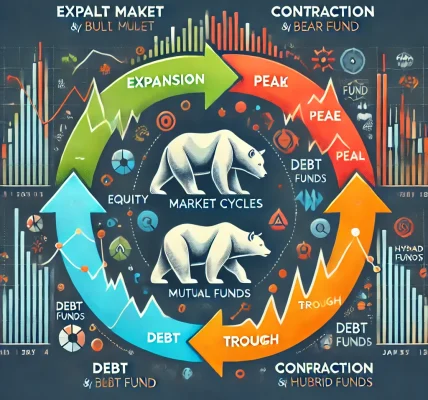Mutual funds are a popular investment option, but to make the most of them, you need to regularly track their performance. Monitoring your mutual funds helps you evaluate their returns, assess their alignment with your financial goals, and make timely decisions. In this blog, we’ll guide you through the process of tracking your mutual fund performance effectively and efficiently.
Why Tracking Mutual Fund Performance is Important
Tracking the performance of your mutual funds is crucial for several reasons:
- Evaluate Returns: Determine if the fund is meeting your expected returns.
- Assess Risk: Ensure the risk levels align with your tolerance.
- Goal Alignment: Check if the fund’s performance supports your financial objectives.
- Stay Updated: Be informed about market changes and their impact on your investments.
- Decision Making: Identify when to hold, switch, or redeem your investments.
Key Metrics to Track
Understanding the following metrics can help you analyze the performance of your mutual funds effectively:
1. Net Asset Value (NAV)
NAV represents the per-unit value of a mutual fund. Regularly tracking the NAV helps you understand the fund’s growth over time.
2. Annualized Returns
This metric shows the average yearly return of the mutual fund, allowing you to compare it with benchmarks or other funds.
3. Expense Ratio
The expense ratio indicates the cost of managing the fund. Lower ratios mean higher net returns for investors.
4. Benchmark Comparison
Every mutual fund has a benchmark index. Comparing the fund’s returns against its benchmark helps assess its relative performance.
5. Alpha and Beta
- Alpha: Measures a fund’s performance against the market.
- Beta: Indicates the fund’s volatility relative to the market.
6. Standard Deviation
This metric measures the fund’s return volatility, helping you gauge the consistency of returns.
7. Portfolio Turnover Ratio
This indicates how frequently the fund manager buys and sells securities. High turnover might lead to higher transaction costs.
Tools and Resources for Tracking
Here are some tools and platforms to help you monitor your mutual fund performance:
1. Fund House Websites and Apps
Most mutual fund houses provide online platforms for tracking investments. These include detailed reports and performance summaries.
2. Investment Platforms
Platforms like Groww, Zerodha Coin, and Paytm Money offer consolidated views of all your mutual fund investments.
3. Third-Party Websites
Websites like Morningstar, Moneycontrol, and Value Research provide comprehensive data and analytics.
4. Mobile Apps
Apps like myCAMS and KFintech make it easy to track and manage your mutual funds on the go.
5. Financial Advisors
Professional advisors can provide personalized insights into your mutual fund’s performance.
Steps to Track Mutual Fund Performance
Step 1: Regularly Check NAV
Track the NAV of your mutual funds at least once a month to monitor growth trends.
Step 2: Compare Against Benchmarks
Evaluate your fund’s returns relative to its benchmark index to assess outperformance or underperformance.
Step 3: Review Fund Portfolio
Analyze the portfolio composition to ensure it aligns with your investment strategy.
Step 4: Monitor Risk Metrics
Review risk metrics like standard deviation, beta, and Sharpe ratio to understand the fund’s risk profile.
Step 5: Track Expense Ratio
Keep an eye on the expense ratio to ensure you’re not overpaying for fund management.
Step 6: Evaluate Periodically
Review the fund’s performance at least annually to decide whether to continue, switch, or redeem your investments.
Common Mistakes to Avoid
- Ignoring Long-Term Performance: Don’t base decisions on short-term fluctuations.
- Overreacting to Market Changes: Avoid making impulsive decisions during market volatility.
- Focusing Only on Returns: Consider risk, expense ratio, and fund quality in addition to returns.
- Neglecting Portfolio Diversification: Ensure your investments are well-diversified to reduce risk.
Conclusion
Tracking the performance of your mutual funds is an essential part of smart investing. By regularly monitoring key metrics and using reliable tools, you can ensure that your investments align with your financial goals. Stay informed, remain patient, and don’t hesitate to seek professional advice when needed.




